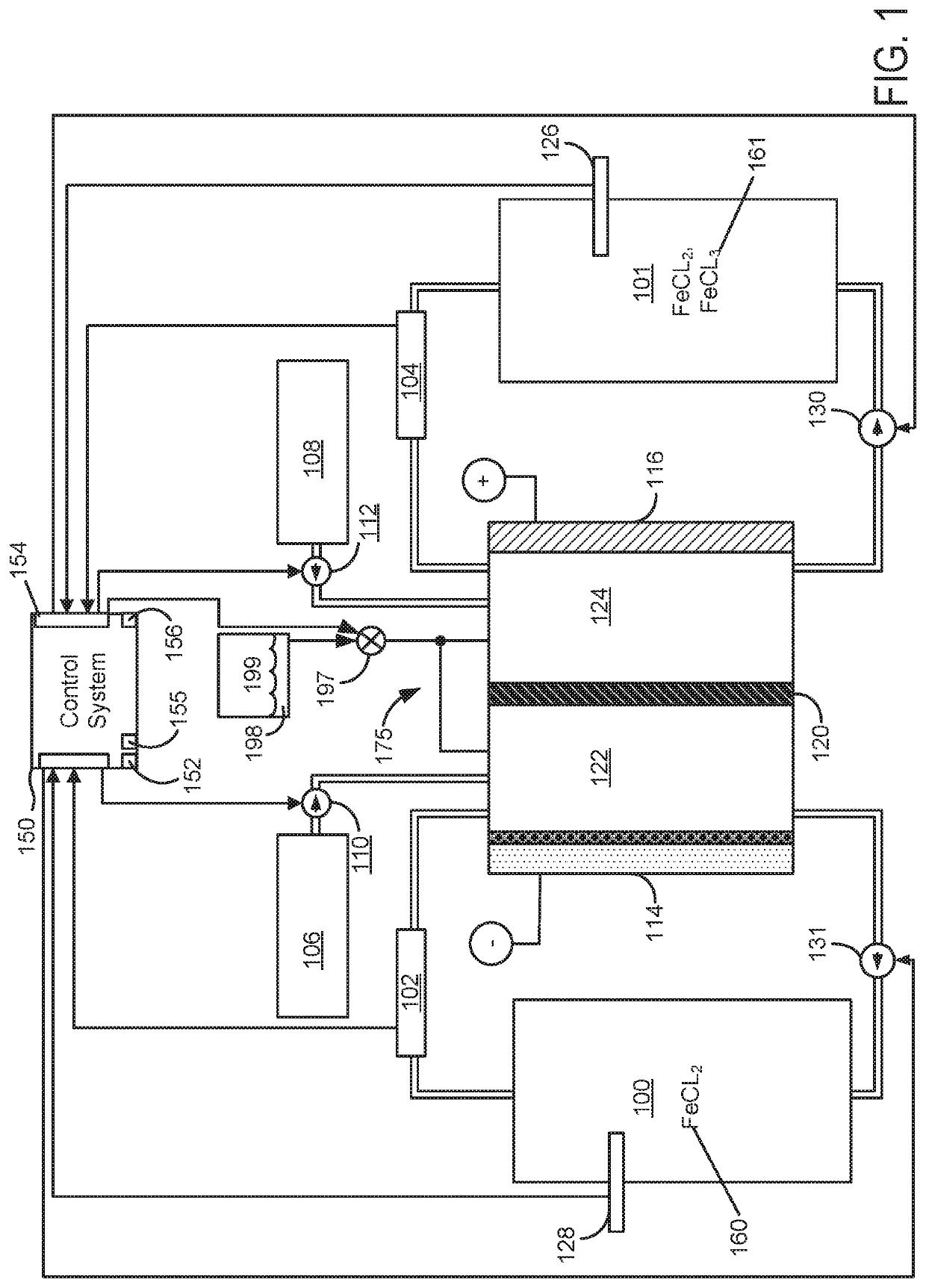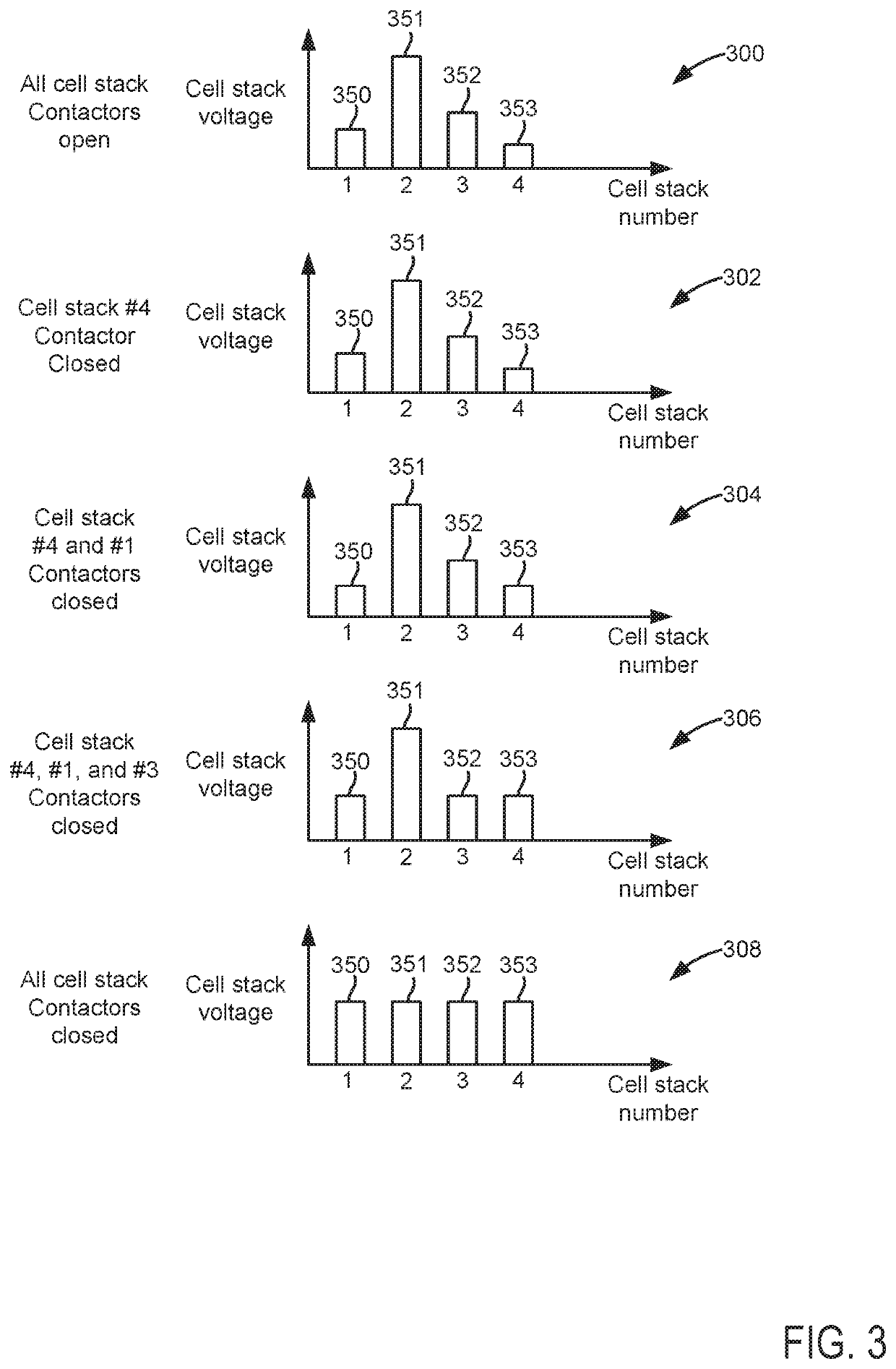System and method for operating an electrical energy storage system
a technology of electrical energy storage and electric energy, which is applied in the direction of electrochemical generators, safety/protection circuits, transportation and packaging, etc., can solve the problems of reducing the possibility of component degradation with an electric power system, increasing the possibility of degradation within the electrical energy storage system, etc., to increase the power output capacity increase the voltage potential of the electric energy storage system, and reduce the charge level
- Summary
- Abstract
- Description
- Claims
- Application Information
AI Technical Summary
Benefits of technology
Problems solved by technology
Method used
Image
Examples
Embodiment Construction
[0014]The present description is related to operating an electric energy storage system (e.g., a direct current (DC) power source) as shown in FIG. 1. The electric energy storage system may store electrical energy that is generated via photovoltaic cells, hydroelectric power, wind power, or via chemical energy. The electric energy storage system may output DC power that may be distributed as alternating current AC after a conversion process. The electric energy storage system may include an iron flow device as shown in FIGS. 1 and 2. The electric energy storage system may combine a plurality of electric energy storage cell stacks in parallel as shown in FIG. 2. The electric energy storage system may operate as shown in FIGS. 3 and 4 according to the method of FIG. 5. A method for operating the electric energy storage system is shown in FIG. 5.
[0015]Referring to FIG. 1, an example of an all iron redox flow battery (IFB) cell is shown. The IFB cell 175 is an electric energy storage ce...
PUM
| Property | Measurement | Unit |
|---|---|---|
| voltages | aaaaa | aaaaa |
| output voltage | aaaaa | aaaaa |
| output voltage | aaaaa | aaaaa |
Abstract
Description
Claims
Application Information
 Login to View More
Login to View More - R&D
- Intellectual Property
- Life Sciences
- Materials
- Tech Scout
- Unparalleled Data Quality
- Higher Quality Content
- 60% Fewer Hallucinations
Browse by: Latest US Patents, China's latest patents, Technical Efficacy Thesaurus, Application Domain, Technology Topic, Popular Technical Reports.
© 2025 PatSnap. All rights reserved.Legal|Privacy policy|Modern Slavery Act Transparency Statement|Sitemap|About US| Contact US: help@patsnap.com



